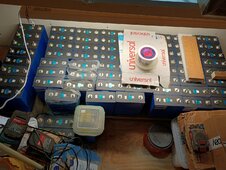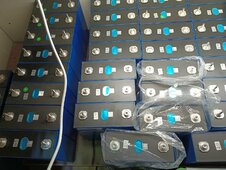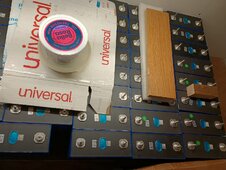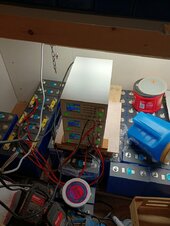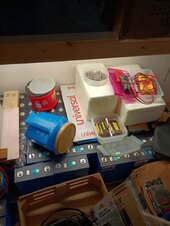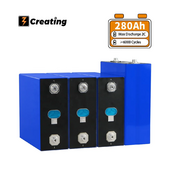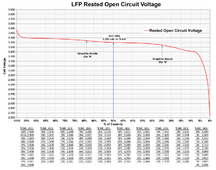64 cells 280Ah version 3 cells:
I bought a composite ratchet and use it some also...I need to get a ratcheting box end wrench or an open access socket for the final assembly of the cells for torque but not overtorque the connections....
the longer grub screws/set screws require the deep well socket or an open end/box end 10mm wrench or open access socket with the 6mm grub screws/set screws....
it is
very important not to arc the cells so I eliminate almost all the extra metal from the area....
plastic trays and plastic toolboxes come in out go the metal ones...!!!!!
I try to keep the exposed prismatic cell terminals covered as I assemble the cells with plastic or wood or other non-conducting materials....
I arced one ((large 272Ah prismatic cell during assembly)) about 3-4 years prior and was able to stop it with a piece of wood dowel rod to quickly remove the arc but it ruined the grub screw /set screw and left a welding remembrance on the bus bar... Be very careful at all times and stop when you are tired (((((always think when working to assemble the series and parallel connections!!!!)))))
I always wear glasses (safety for my eyes).

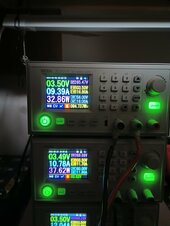
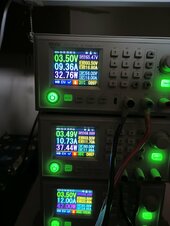
the Riden buck chargers in these three photos....above.
the bottom one is the Riden 6024 with 10AWG tinned copper silicone cable with ring terminals which outperforms the 6012 (in the middle) and 6018 (on top)above...
I believe the upgraded 10AWG copper silicone insulated wire is the key here(IMO) ... the ring terminals are a must for good connections also...
The silicon wire is super flexible and is tinned copper very fine copper wires within...IMO

all three of the Riden buck chargers are set at 3.5 volts for top balancing. At the end of the day >>> I turned them down to 3.36 volts for overnight charging.... I will turn them up when I am paying more attention to them in the morning....


PS: >>>> I am charging 6 at a time each Riden has 2 cells in parallel to charge so need about 400Ah to get to top balance levels...for every 2 cells in parallel.
each of the Riden buck chargers I assembled from kits and the AC-DC power supply has a small potentiometer that can be adjusted before you close the case....I never adjusted those at all so what is says on the screen is the input voltage from each AC-DC switching power supply into the Riden buck charger... and most are between 65.47volts, 69.69volts, and 68.26volts input into the Riden 6018, 6012, and 6024 buck chargers volts ......I may adjust them (the internal potentiometer) a tad someday( as fast as molasses flows in January)...

inflation has these more expensive today than a few years ago.

...but these are very good units.... especially the 6024 one(my favorite).IMO

